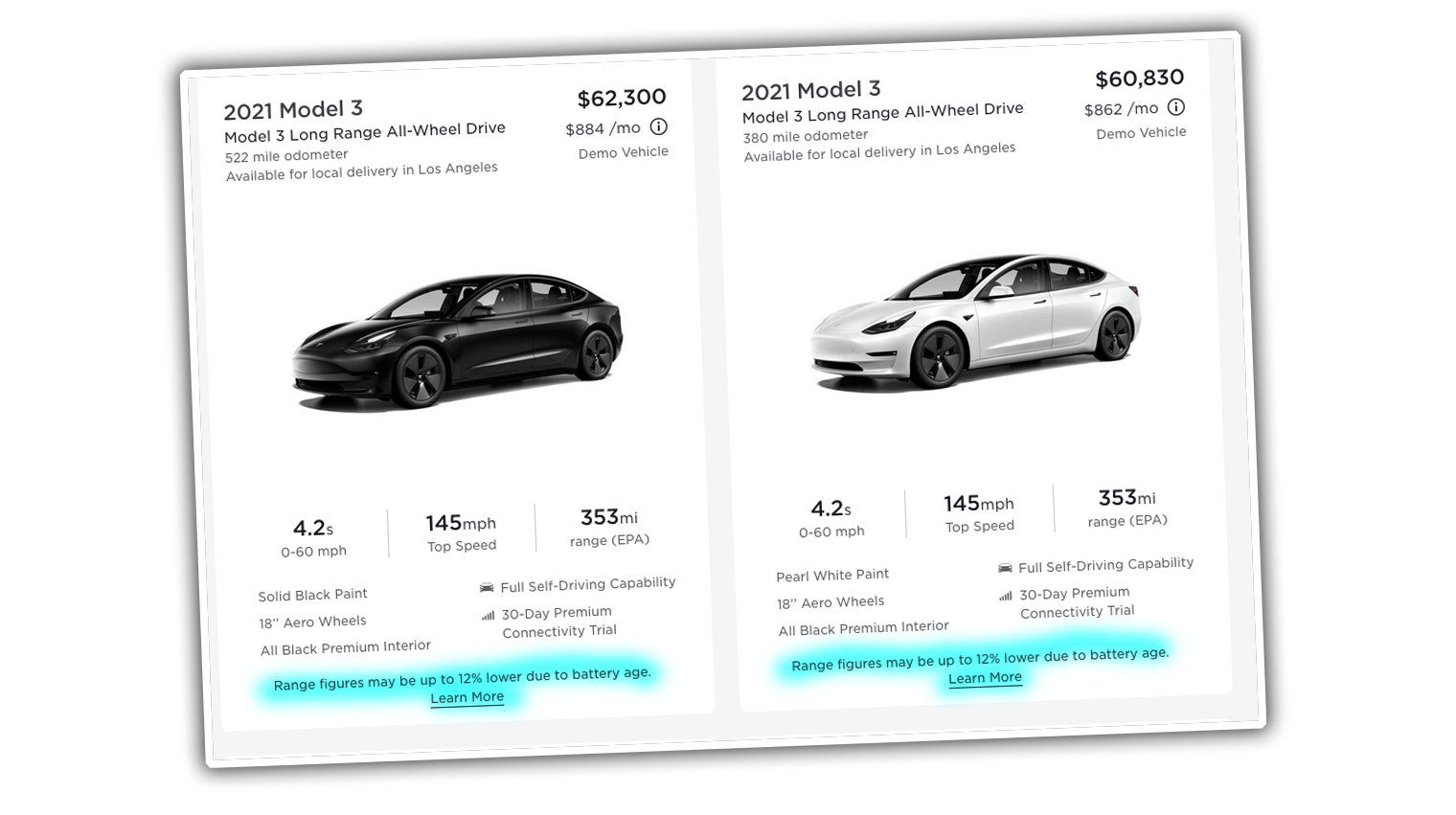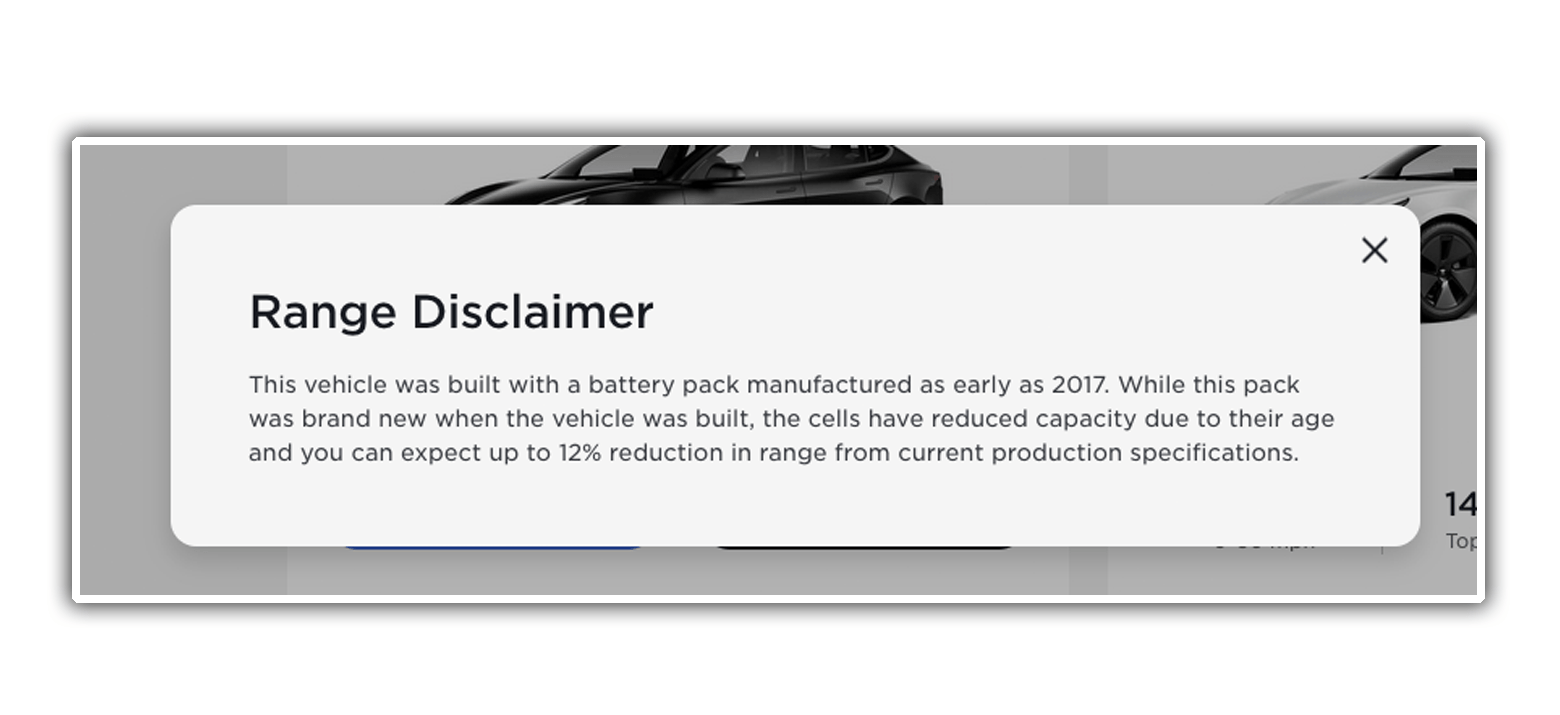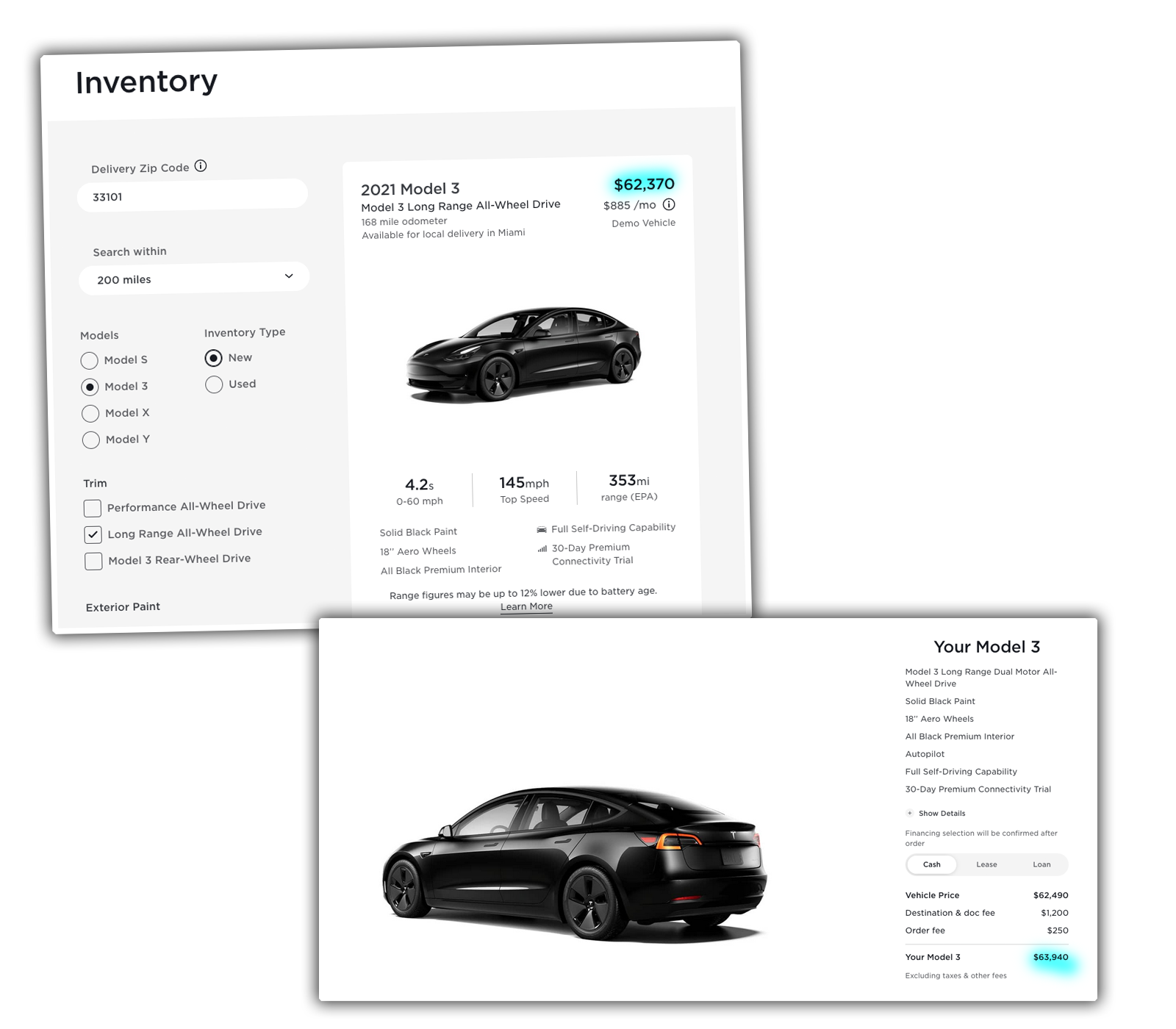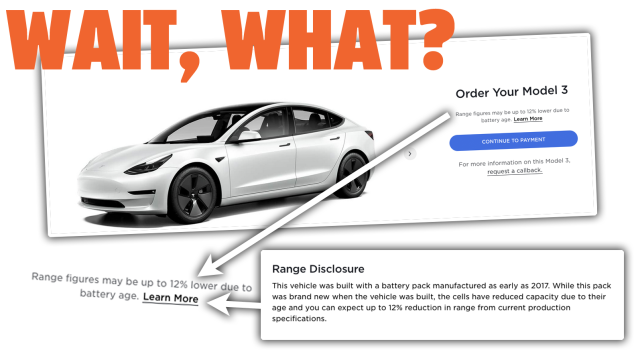Determining what year a car is can actually prove to be a trickier question than you’d think. The year the car was actually manufactured is a huge part of it, of course, but what about a car made from unused old stock? Or there’s the case of VW’s mascot Beetles, named Max, all of which look like 1963 cars but were actually built in 1964. Currently, this question is on my mind because Tesla seems to be selling a lot of 2021 Model 3s that may come with battery packs built in 2017. What’s going on?
These first came to my attention from an email from a buyer of one of these cars from a series of tweets from Seth Horowitz, a man with a well-educated Rodney Dangerfield profile pic who had found a lot of Model 3s for sale all across the country — he saw examples in Denver, Los Angeles, Miami, Portland, and even Honolulu, for example, and all of these locations had 2021 Model 3s for sale, at prices not appreciably less than other 2021 Model 3s, that bore this unusual disclaimer:

“Range figures may be up to 12% lower due to battery age,” it reads, and then offers you an opportunity to “Learn More.” OK, let’s learn more:

The “Range Disclaimer” states
This vehicle was built with a battery pack manufactured as early as 2017. While this pack was brand new when the vehicle was built, the cells have reduced capacity due to their age and you can expect up to 12% reduction in range from current production specifications.
This is a bit confusing, for a number of reasons. First, why is there a 2017 pack being used in a 2021 car, even if that car is explained to be a “demo car?” Second, when it says “this pack was brand new when the vehicle was built, the cells have reduced capacity due to their age” (emphasis mine), what does that, mean, exactly?
The pack was brand new when the vehicle was built? What vehicle? The 2021 Model 3 that’s being sold with the pack, or another one that could be as old as one from 2017? I can’t quite make sense of this.
I understand the concept of New Old Stock (NOS) parts, of course, and that’s what this seems to be, but I’m thrown by the mention that the pack was new when the vehicle was built, because that can’t be true if the car was built as a 2021 model unless the car is potentially as old as a 2017 model, in which case why is that four-going-on-five-year-old car being sold as a 2021 car?
I’d reach out to Tesla for help, but as we all know, I may as well reach out to the giant, gregarious rat known as Charles Emerson Cheese, or more commonly, Chuck E. Cheese, as both he and Tesla’s PR/Media relations department are equally real.
Now, it’s not like Tesla is hiding this information, exactly — the disclaimer (confusing as it is) and the notice that the range could be up to 12 per cent lower is right there on the site — but considering how important batteries are to an EV, I’m not convinced a 2021 car with a potentially 2017 battery pack should be sold as a 2021 car.
One of the amazing things about EVs is how much potential for longevity there is in their drivetrains, so much simpler and with so many fewer moving parts than an equivalent combustion engine. But the batteries have always been the limiting factor, and while they’ve proven to be more robust and longer-lived than we may have guessed ten years ago, they’re still the Achilles’ heel of EVs, and the costs of replacing them are potentially debilitating.
That’s why I’m an advocate of removable, modular batteries, though this is an idea that has less support among automakers than selling cars to people with trunks filled with cash and a variety of snacks.
Maybe this is a way to get around supply chain issues, and get cars available to be sold faster? There’s really not a big cost advantage to buying one of these demo cars with a potentially four-plus-year-old battery, either. A brand new Model 3 with the same specs as this demo car example from Miami is only $US1,570 ($2,209) more expensive, and it has a battery pack that’s not potentially halfway through its warranty:

The Model 3 has an eight-year/100,000 mile warranty for the battery, with a minimum of 70 per cent retention of capacity. If you do buy one of these demo cars with a 2017 battery that’s already had 12 per cent degradation, will the warranty only be for four more years and you’re starting with an 88 per cent range battery?
Or will Tesla warranty the battery for eight years from your purchase date, and replace it if it drops to go below the 70 per cent threshold within the warranty time? It’s not made clear here at all.
Even comparing this to a combustion car sold as a 2021 with a 2017-built engine isn’t analogous, because a factory-stored engine wouldn’t degrade over time like a battery will. This is a unique situation, and I’m genuinely confused about how it should be handled.
I think batteries are such a crucial part of an EV, and a part that is the most affected by the passage of time, so I personally don’t think you should be able to sell a car as a 2021 if it has a battery pack from 2017 or 2018 or whenever if that date isn’t 2021.
Tesla is making this known, and I can’t tell them where to price their cars, but I think a consumer paying full (or at least near-enough to full) price for a car with a several year old, difficult and expensive to remove/replace battery is likely making a mistake.
